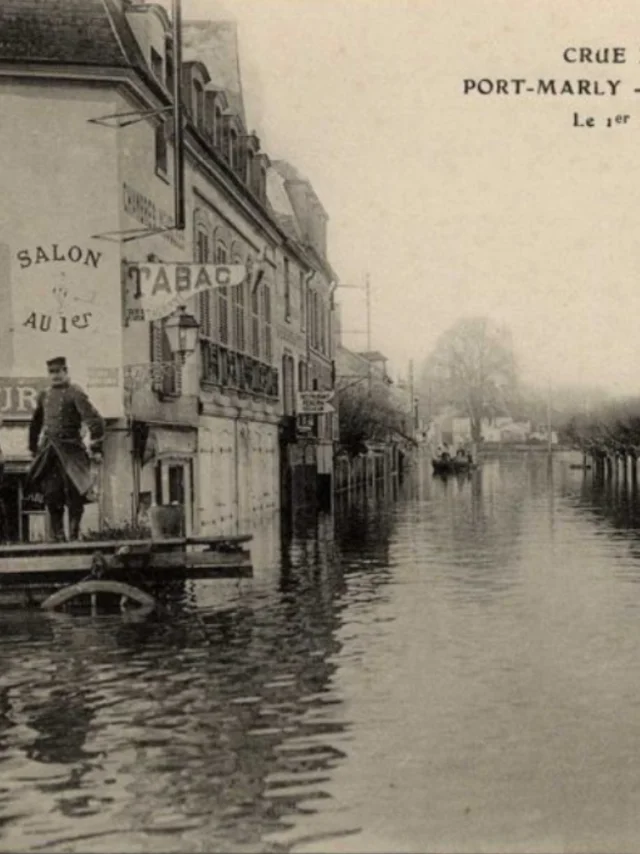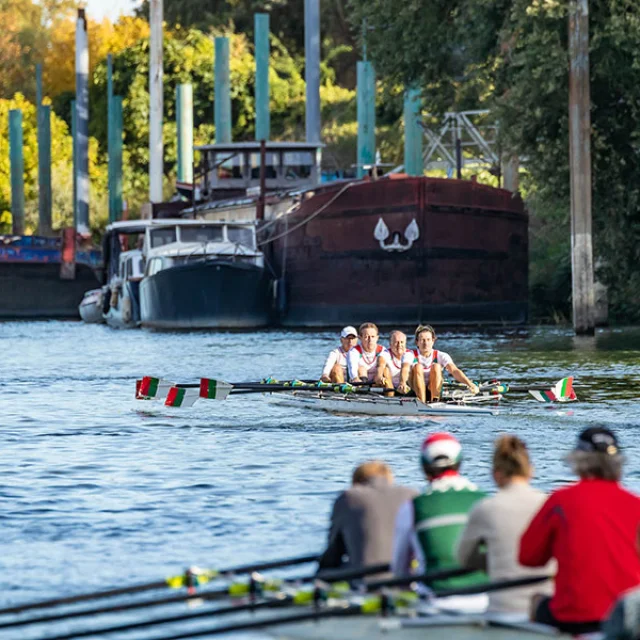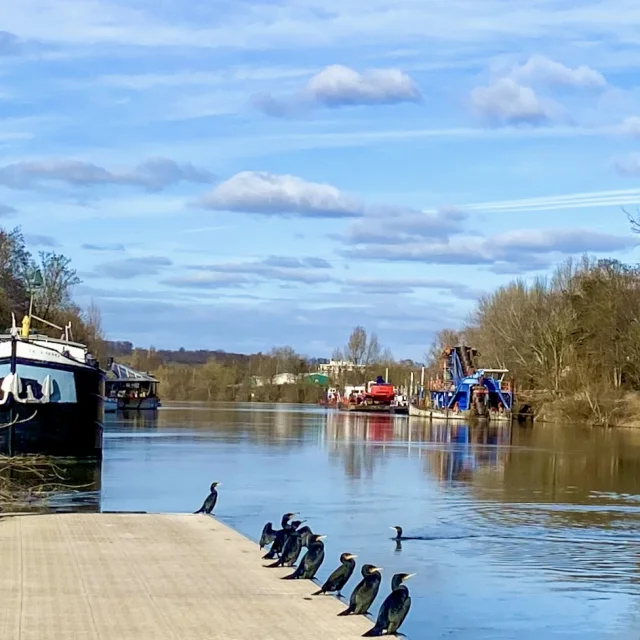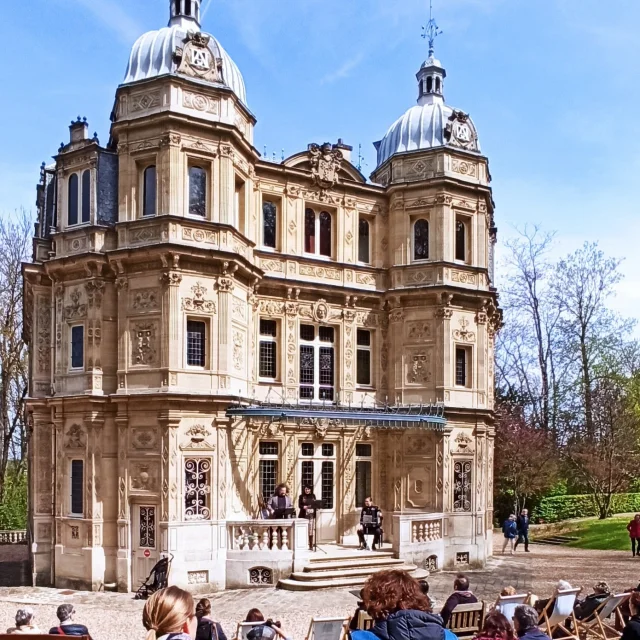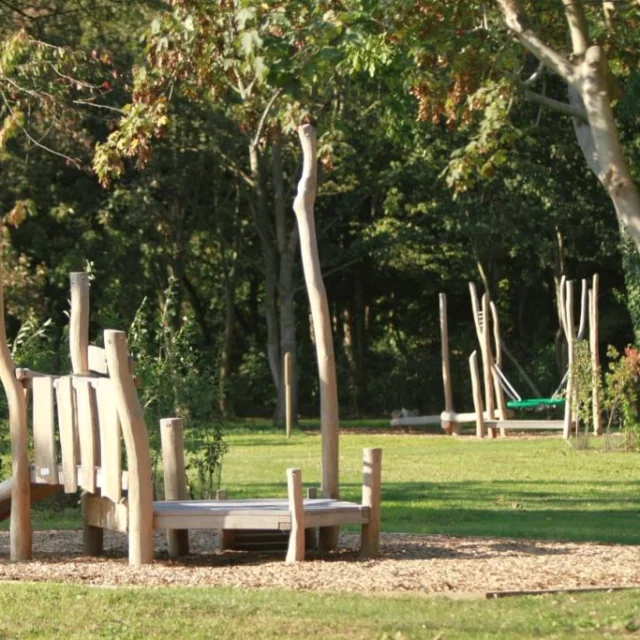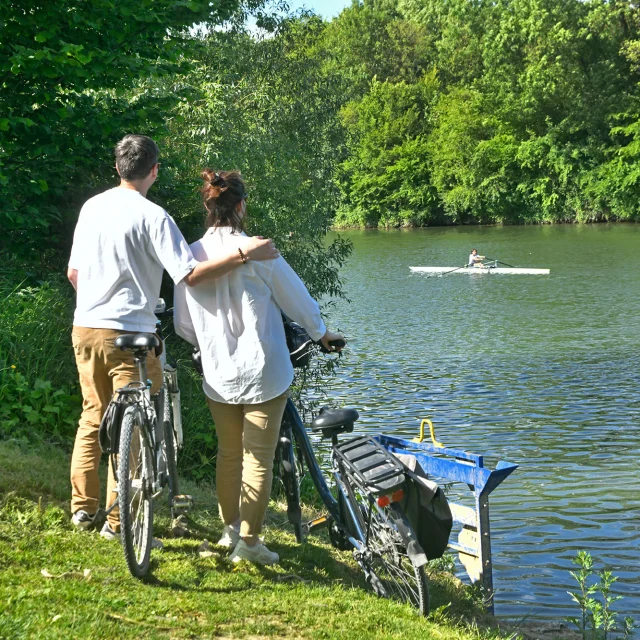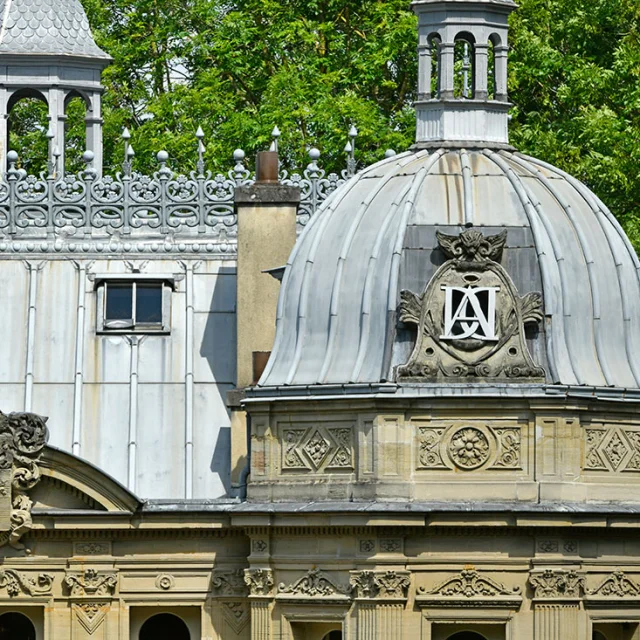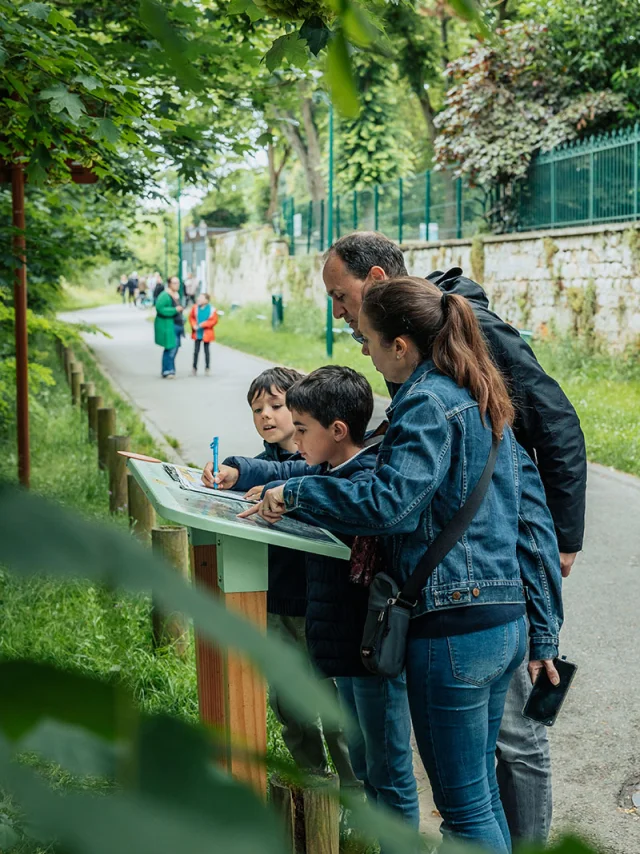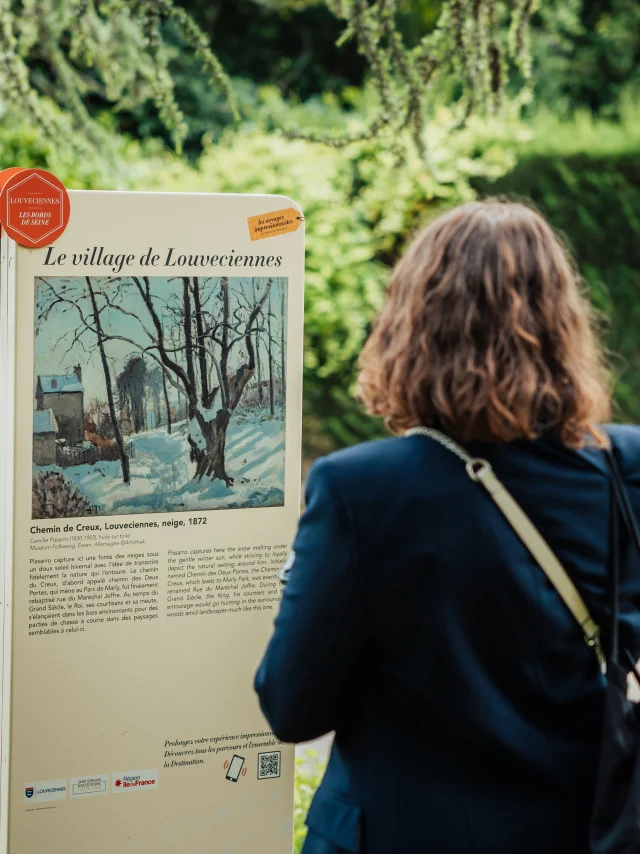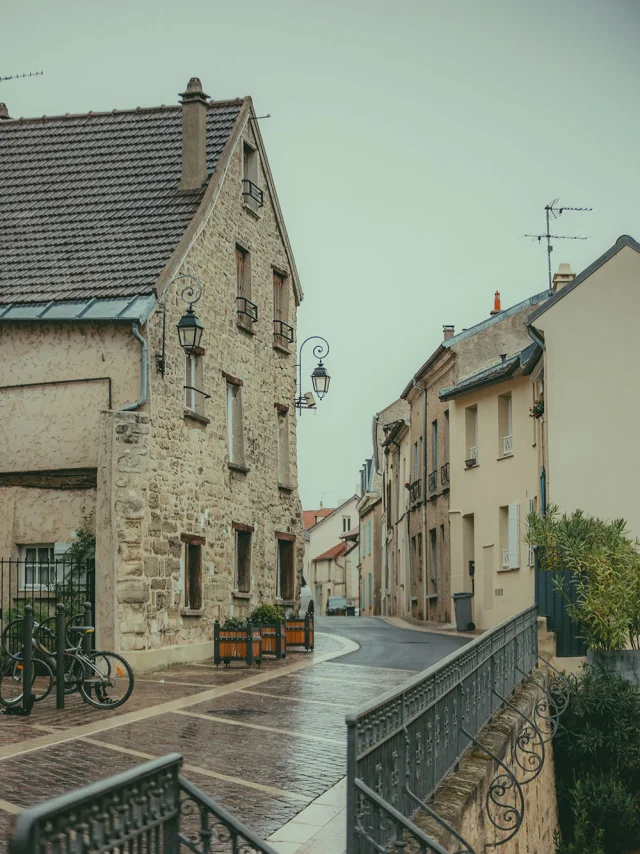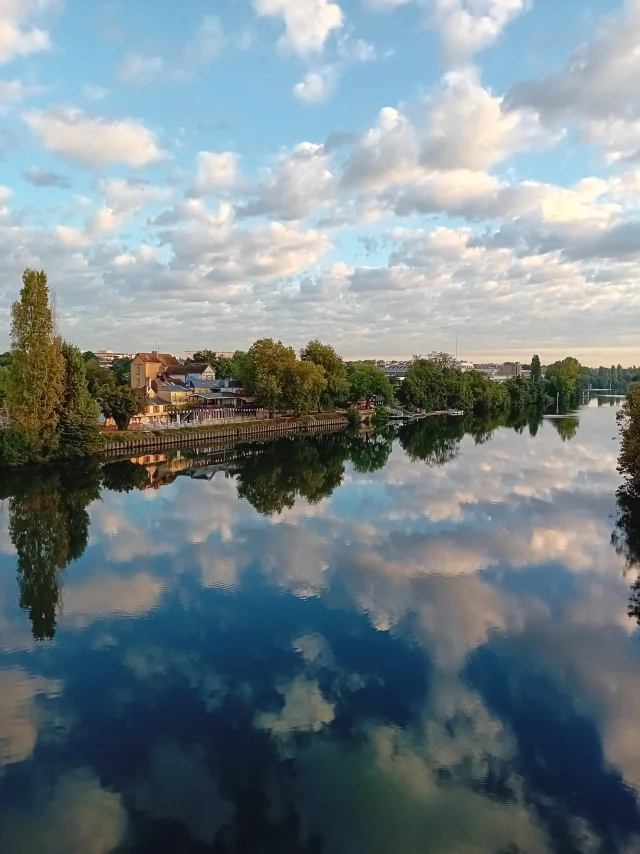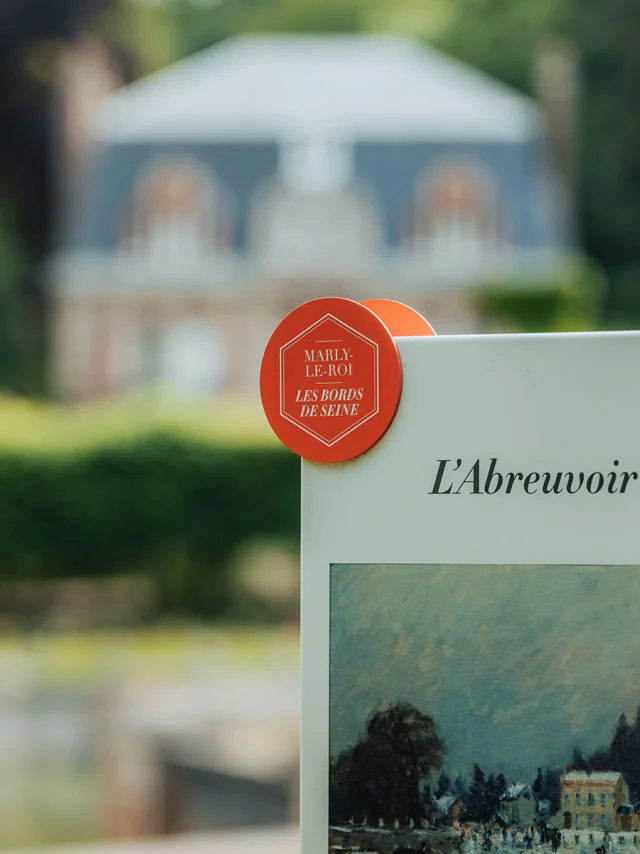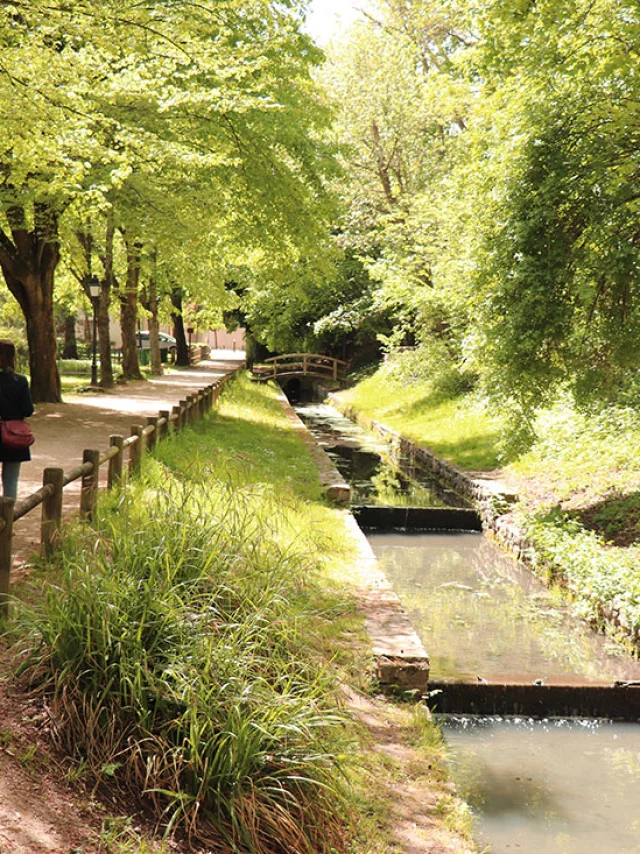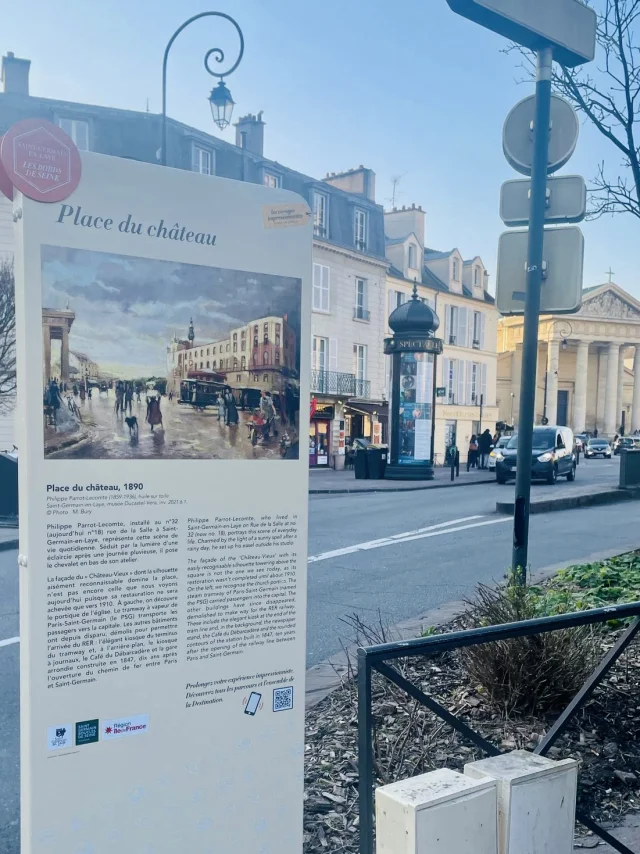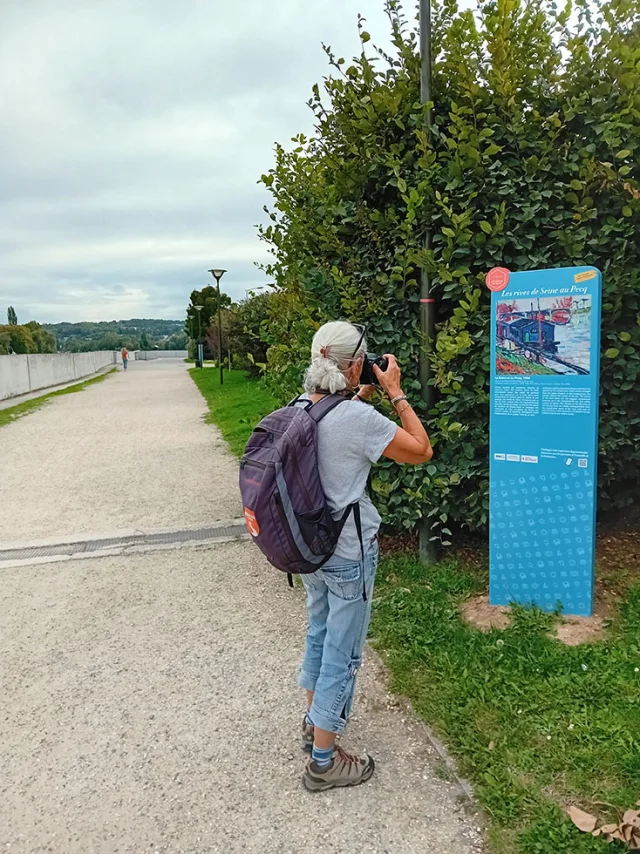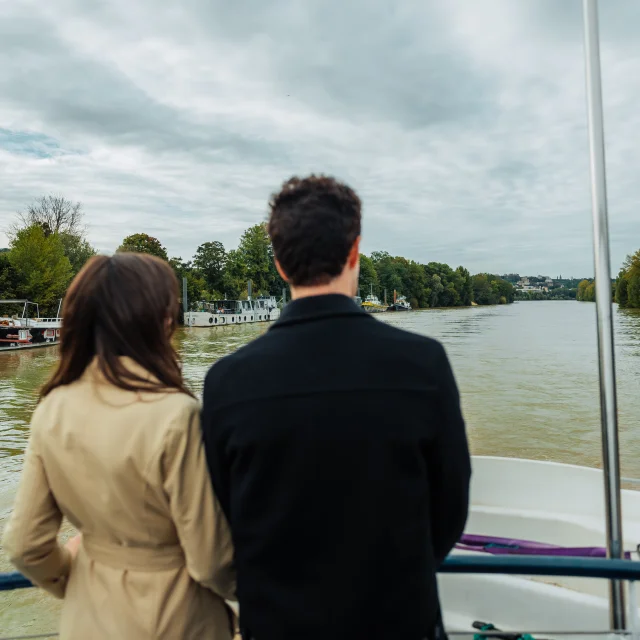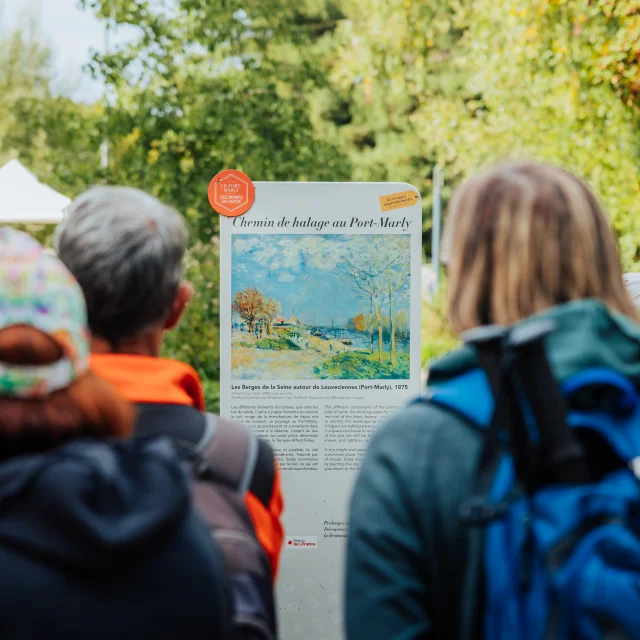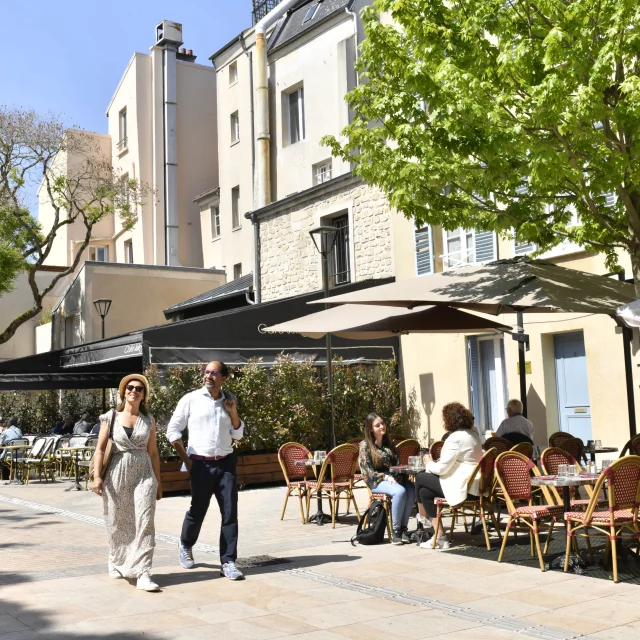Camille Corot, was one of the first to discover the village of Port-Marly. He was seduced by the watercourse bordering the town, which stretched out slowly, like an invitation to stroll.
Thus, in August 1872, Corot, painted Le tournant de la Seine à Port-Marly, while staying at the Château des Lions for around ten days. In this painting, he depicts a fisherman on the Seine surrounded by idyllic scenery. Walking and fishing are not the only pleasures to be enjoyed on this river.
In fact, in the time of the Impressionists, canoeing was also a popular activity on the Seine. Nowadays, sailing continues in a variety of forms, such as rowing, paddling, boating.
The Rowing-Club du Port-Marly, for example, is one of the many leisure activities in Port-Marly. Every year, it organises an event open to all (with a licence), the Régate des Impressionnistes. You can also enjoy the cruises organised by the Tourist Office. They depart from Croissy-sur-Seine, Chatou, Carrières-sur-Seine and Le Pecq.
There are numerous small islands dotting the Seine, providing a real invitation to relax. Ile de la Loge in Port-Marly is one of them, offering children’s play areas, flower meadows and shady walkways.

